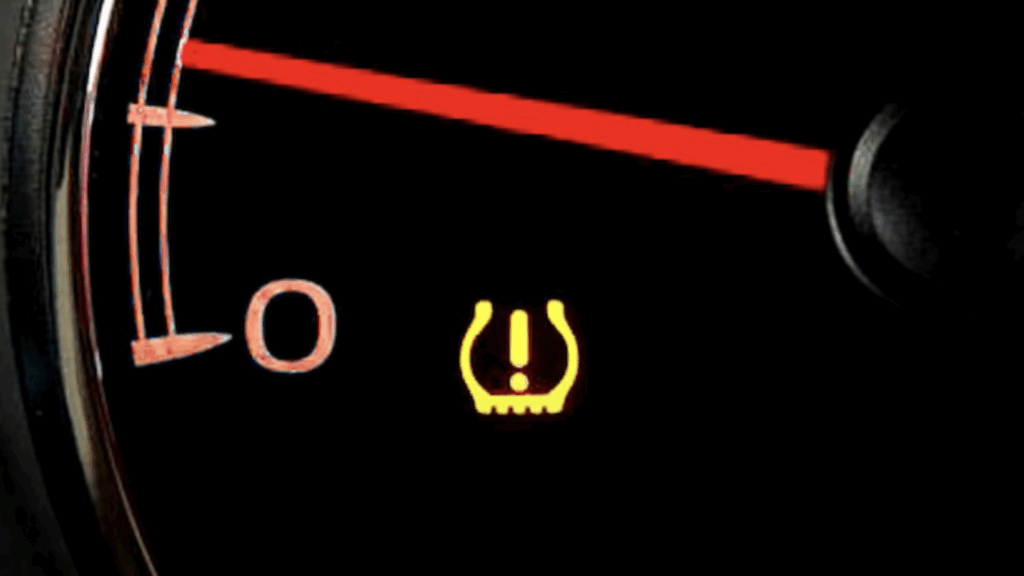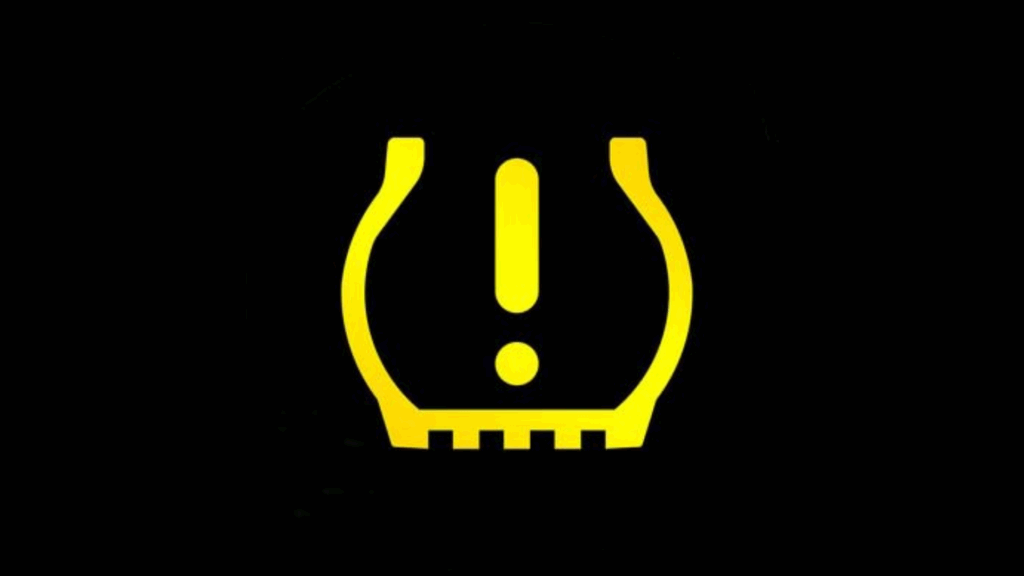I’ll never forget the first time my tire pressure light started flashing while I was driving.
I panicked. Was it just low tire pressure or something more serious?
Turns out, a flashing TPMS light means something different than a solid one, and it’s not something to brush off.
That little blinking icon could be warning you about a sensor malfunction or system error, not just a problem with your tires.
In this post, I’ll explain what each version of the light means, what causes it to flash, and what steps you should take next.
If you’ve ever stared at that blinking symbol and felt unsure, you’re not alone.
Let’s break it down together so you can drive with confidence, because understanding your dashboard means driving smarter and safer.
What Is the Tire Pressure Monitoring System (TPMS)?

The Tire Pressure Monitoring System (TPMS) warns drivers when one or more tires are too low on air. It’s standard in most modern cars and has become required in many countries due to safety and fuel efficiency concerns.
There are two main types of TPMS:
- Direct TPMS: Uses individual pressure sensors inside each tire to measure and transmit real-time pressure data to the car’s computer.
- Indirect TPMS: Works with the vehicle’s ABS or wheel speed sensors to detect pressure loss based on changes in wheel rotation speed.
When tire pressure drops below the recommended threshold, the TPMS light will appear on your dashboard.
A solid light usually signals low pressure, while a flashing light often indicates a system malfunction or sensor issue.
TPMS helps maintain safe driving conditions, improve fuel economy, and extend tire life. It’s a small dashboard light with a significant impact on road safety.
Can You Still Drive with a Flashing Light?
Yes, you can technically drive with a flashing TPMS light, but it’s not safe for extended use.
A flashing light means the system isn’t working correctly; it can’t alert you if a tire becomes dangerously underinflated.
While your tires might seem fine now, you won’t be warned about sudden air loss, punctures, or slow leaks. This puts you at risk of reduced traction, poor fuel economy, or even a blowout.
For short trips like getting to a mechanic or tire shop, it’s usually okay, especially if you’ve checked tire pressure manually. Still, it’s best to address the issue quickly.
Fixing your TPMS restores your vehicle’s ability to monitor tire pressure accurately, which is crucial for maintaining safe road conditions.
Difference Between Solid and Flashing TPMS Light
Understand the key differences between a solid and flashing tire pressure warning light, what each means, and how to respond to keep your vehicle safe.
| Feature | Solid TPMS Light | Flashing TPMS Light |
|---|---|---|
| Primary Meaning | Tire(s) are underinflated | TPMS system malfunction |
| When It Appears | While driving or after startup | Flashes for 30–60 seconds at startup, then stays solid |
| Common Causes | Low tire pressure due to air loss or cold temperatures | Dead sensor battery, faulty sensor, or communication failure |
| TPMS Functionality | Still actively monitors tire pressure | Monitoring may be disabled or inaccurate |
| Immediate Action | Check and inflate all tires to the recommended PSI | Manually check tires; visit a mechanic for TPMS diagnostics |
| Urgency Level | Moderate—affects safety and tire wear | The high system is unreliable or inactive |
| Can You Still Drive? | Yes, but check the tires soon. | Yes, but fix the system promptly to avoid missed tire issues |
What Causes a Flashing TPMS Light?
A flashing TPMS light usually means there’s an issue with the system, not the tire pressure itself. The most common causes are:
1. Dead TPMS Sensor Battery
Most TPMS sensors have a built-in battery that lasts between 5 and 10 years.
Once it dies, the sensor stops transmitting data, triggering a flashing light.
Since these batteries aren’t replaceable, the entire sensor must be replaced to restore full system function.
2. Sensor Damage or Failure
Sensors can get damaged during tire installation, rotation, or impact from potholes.
A cracked or broken sensor won’t send accurate pressure readings, leading to a system malfunction.
If your TPMS light flashes after recent tire work, sensor damage is a strong possibility.
3. Incorrect Reset Procedures
After rotating tires or inflating them to the correct PSI, the TPMS may require a reset.
If this step is skipped or done incorrectly, the system might register inaccurate data or fail to sync, resulting in a flashing warning light.
4. Faulty TPMS Module or Wiring
The TPMS module receives data from all tire sensors. If the module malfunctions or the wiring becomes corroded or disconnected, it can cause communication errors.
This typically results in a flashing light and the loss of real-time tire pressure monitoring.
5. Incompatible Aftermarket Wheels or Tires
Aftermarket wheels or low-cost replacements may not support TPMS sensors properly.
In some cases, they don’t physically accommodate the sensors, or the sensors used may not communicate correctly with the car’s system, triggering a flashing light.
What to Do When the TPMS Light Flashes
If your TPMS light flashes, here are the steps I follow:
- Check all tire pressures manually using a quality gauge. Don’t rely on how the tire looks.
- Compare to the PSI listed on the sticker inside your driver’s door, not the number on the tire.
- Add air if needed, then drive a few miles to see if the light resets.
- If pressure is fine but the light still flashes, try a TPMS reset using your vehicle’s manual procedure.
- Still flashing? It’s time to visit a tire shop or mechanic to scan the sensors and pinpoint the issue.
How to Reset the TPMS Light
Many vehicles reset the TPMS light automatically after proper inflation, but some require a manual reset. The steps vary by model, but here’s a general guide:
- Turn the ignition to “on” (without starting the engine)
- Locate and press the TPMS reset button (often beneath the steering wheel)
- Hold the button until the TPMS light blinks, then release
- Drive the car for 10–15 minutes above 50 mph to complete the reset
If your vehicle doesn’t have a button or the reset doesn’t work, consult the owner’s manual or take it to a technician.
When to Replace TPMS Sensors?
TPMS sensors don’t last forever. Knowing when to replace them helps keep your tire pressure system working right and keeps you safe on the road. Here are the signs to watch for:
- Battery Life Is Up: Most TPMS sensor batteries last 5 to 10 years. Once the battery dies, the whole sensor needs replacing.
- Warning Light Stays On: A flashing or unresponsive TPMS light may mean a failing sensor, even if your tire pressure is fine.
- Signal Loss on a Scan: A diagnostic scan can show if a sensor has stopped sending data.
- Physical Damage or Corrosion: Cracks, rust, or broken parts on the sensor are clear signs it needs replacing.
- Shop Diagnosis Confirms Failure: Tire shops can quickly test and pinpoint the faulty sensor.
- Replace All If They’re Aging: If one fails and others are old, replacing all at once can save time and money.
Can You Ignore the Light If Your Tires Look Fine?
It might seem okay to ignore the TPMS light if your tires appear normal, but that’s risky.
Tires can lose significant pressure 5 to 10 PSI without visibly looking flat, and that’s enough to affect handling and fuel economy.
A flashing light is even more serious, indicating the system itself isn’t working.
Without it, you won’t be alerted to dangerous pressure drops. Always verify tire pressure with a gauge rather than relying on sight.
If the system keeps flashing despite correct pressure, have it inspected. Addressing the issue early helps maintain both your safety and your vehicle’s performance
Conclusion
A flashing TPMS light isn’t something to ignore. While a solid light usually indicates low tire pressure, a flashing one indicates that the system itself isn’t working correctly.
That means you’re driving without any automated safety checks on your tires and that’s not a risk worth taking.
Start by checking your tire pressure manually.
If everything is fine and the light continues to flash, have the TPMS diagnosed and reset. Sometimes it’s just a sensor battery or a quick recalibration.
Your tires are literally what keep you connected to the road. If that light’s flashing, it’s time to listen.
Let me know how your fix went, I’d love to hear what worked for you!
Frequently Asked Questions
Can cold weather cause my TPMS light to turn on?
Yes, cold temperatures can lower tire pressure, triggering the TPMS light. It may go off once the tires warm up or are properly inflated.
How long do TPMS sensors last?
Most TPMS sensors last between 5 to 10 years. Their batteries are sealed and non-replaceable, so the entire sensor must be replaced when it fails.
Do I need to replace all TPMS sensors at once?
Not necessarily. But if one sensor fails and the others are aging, replacing them all at once can save time and labor costs.


